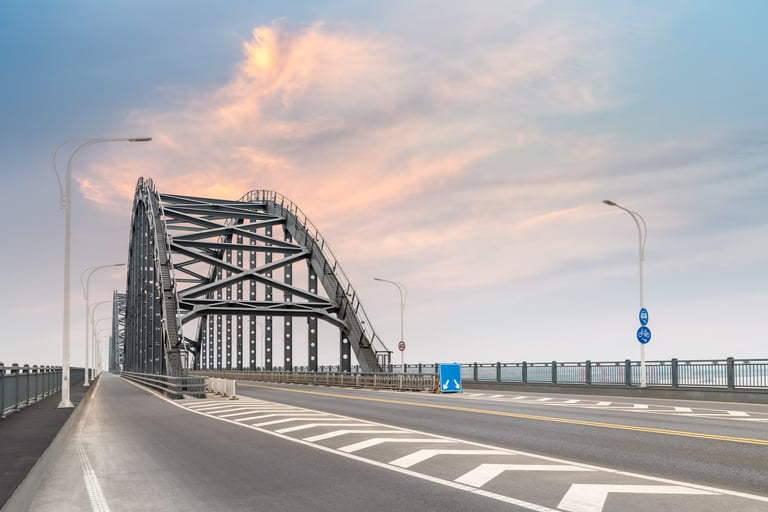Steel Bridges: A Strong Solution for Modern Infrastructure
Bridges
Behind the strength of highways, flyovers, and large river crossings lies one key material — steel. For decades, steel bridges have been the backbone of major infrastructure projects around the world, including in Indonesia.
Why Choose Steel Bridges?
1. Strength and Durability
Steel has exceptionally high tensile strength, meaning steel bridges can withstand heavy loads — from small vehicles to massive container trucks — without easily deforming or deteriorating.
2. Time and Cost Efficiency
Steel components can be prefabricated in factories and quickly assembled on-site, significantly speeding up construction compared to conventional methods.
3. Design Flexibility
From truss and girder bridges to suspension structures, steel can adapt to a wide range of designs — ideal for urban areas, rural regions, and even remote locations.
4. Easy Maintenance and Restoration
When damage occurs, steel structures can be repaired or replaced partially, without dismantling the entire bridge — minimizing downtime and cost.
Read also: Reclaimer – An Efficient Bulk Material Handling Solution for Modern Industries
Real-World Applications
Steel bridges are found in many areas, including:
Elevated toll roads in major cities
Inter-island bridges across archipelagic regions
Temporary or emergency bridges, such as the iconic Bailey Bridge used in disaster response
With fast construction times and exceptional durability, it’s no wonder steel remains a top choice for governments and contractors in large-scale infrastructure development.
Conclusion
Steel bridges are not only an economical choice but also a smart strategy for building strong, efficient, and long-lasting infrastructure. In a construction era that demands both speed and strength, steel bridges stand as the ultimate answer to modern engineering challenges.


